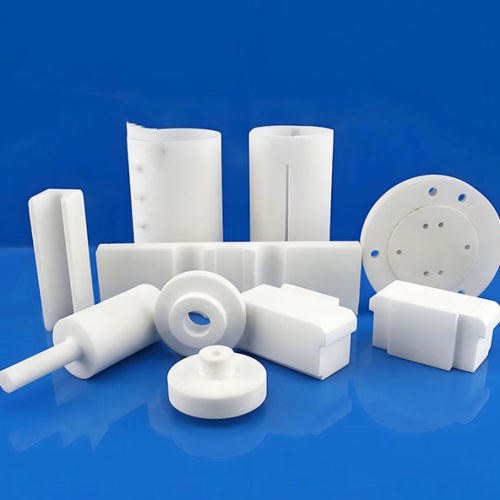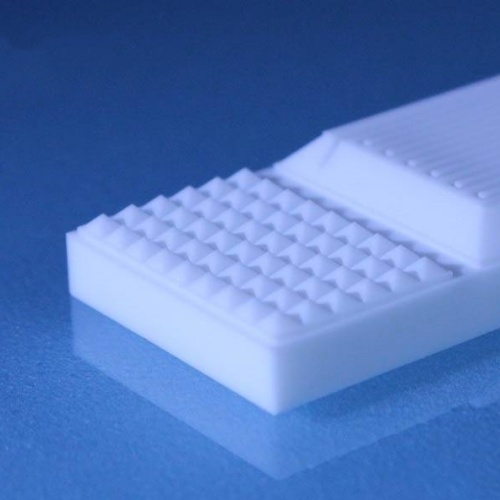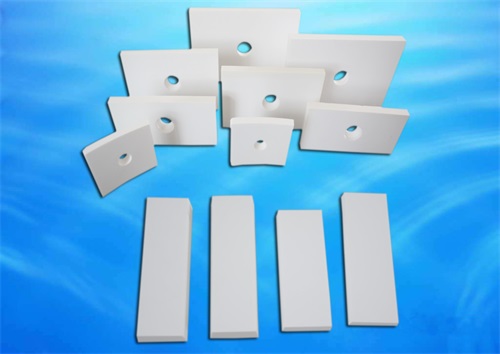The core advantages and applications of Macor ceramic insulation components in the high-temperature furnace industry
Core advantages
Excellent high temperature resistance
Macor ceramic insulation components can work stably in a high temperature environment of 800 ℃ for a long time, with a peak temperature resistance of up to 1000 ℃. This characteristic makes it perform well in extreme environments of high-temperature furnaces, far exceeding traditional stainless steel (500 ℃) and ordinary ceramic (600 ℃) materials.
Ultra-low thermal conductivity
The thermal conductivity of Macor ceramics is only 1.46 W/m · K, which is about 1/25 of stainless steel. This extremely low thermal conductivity, combined with its zero pore structure, can significantly reduce the heat loss of the furnace body, thereby greatly reducing energy consumption. For example, after adopting Macor ceramic insulation panels in a certain aluminum alloy melting furnace, energy consumption was reduced by 38%, and annual electricity savings exceeded 500000 yuan.
Combining thermal shock resistance and mechanical strength
The thermal expansion coefficient of Macor ceramics is 9.3 × 10 ⁻⁶/K, which is close to that of metals. This characteristic increases its thermal shock resistance by 5 times compared to alumina ceramics under frequent start-up and shutdown conditions, avoiding cracking problems caused by sudden temperature differences. At the same time, its bending strength can reach 120 MPa, which can withstand the mechanical impact of material loading and unloading in the furnace.
Zero pollution and long lifespan
Macor ceramics do not release volatile substances in high temperature environments and do not cause pollution to sensitive materials such as semiconductor wafers, optical glass, etc. Continuous use in a 1600 ℃ hydrogen atmosphere furnace for 3 years without oxidation or pulverization, with a lifespan 2-3 times that of traditional materials.

Application scenarios
Metallurgical Industry
-Molten metal crucible bracket: low thermal conductivity reduces heat conduction downwards, and with the help of a water cooling system, it saves 50% energy.
-Furnace door seal: high temperature deformation resistance, ensuring furnace airtightness and reducing thermal energy leakage.
Semiconductor Manufacturing
-Diffusion furnace insulation ring: Low gas release rate (<1 × 10 ⁻⁹ Torr · L/s · cm ²) to avoid contaminating silicon wafers and ensure chip yield.
-MOCVD equipment thermal barrier layer: precise temperature control to ± 1 ℃, improving the uniformity of epitaxial wafer growth.
Ceramic sintering
-Pushing plate kiln load-bearing beam: high temperature creep resistance, no deformation under a load-bearing capacity of 200kg/m ², supporting continuous production.
-Atmosphere furnace insulation screen: Excellent stability in hydrogen oxygen environment, avoiding the risk of brittleness of traditional materials.
Nuclear industry
Macor ceramics have also performed well in the nuclear industry. Its zero porosity and low neutron activation properties enable it to effectively reduce radiation damage and maintain structural integrity even after long-term exposure to high radiation environments. For example, in nuclear reactor control rod supports, their radiation resistance can extend the lifespan of components to more than three times that of traditional metal materials.

Core values
Energy Efficiency Revolution
Reduce heat loss by 30% -50%, helping to achieve the “dual carbon” goal.
Reliable and durable
Resistant to thermal shock and corrosion, reducing equipment downtime by 80%.
Flexible customization
Support non-standard design, deliver samples within 3 days at the fastest, and be able to quickly respond to urgent needs.

Macor ceramic insulation components are redefining the performance standards of high-temperature industries with their outstanding high-temperature resistance, ultra-low thermal conductivity, thermal shock resistance, and long lifespan. Whether it is metallurgical furnaces that pursue ultimate energy consumption or semiconductor equipment that requires nanoscale cleanliness, Macor Ceramics can provide highly stable, energy-efficient, and adaptable solutions.
NEXT:What are the solutions for Macor ceramic drilling/cutting
CATEGORIES
LATEST NEWS
- Petrochemical ceramic injec...
- Zirconia Ceramic Rod Custom...
- High-temperature resistance...
- What is the wear resistance...
- What is the hardness of cer...
- Aluminum oxide ceramic cust...
- What are the main aspects o...
- What are the mechanical pro...
- Thermal properties of zirco...
- What properties should be c...
